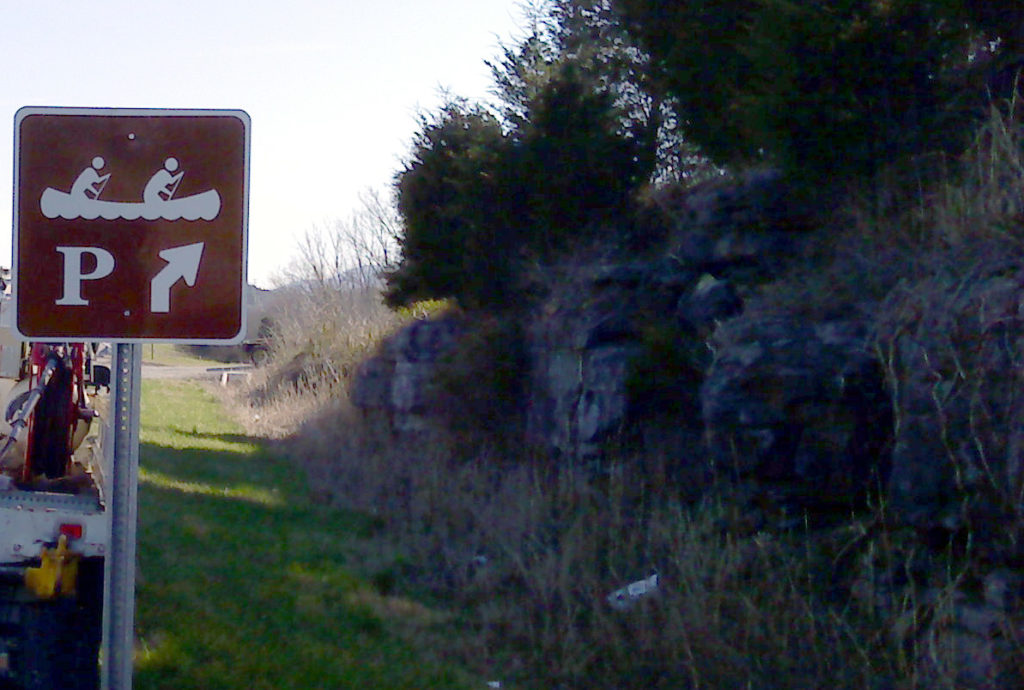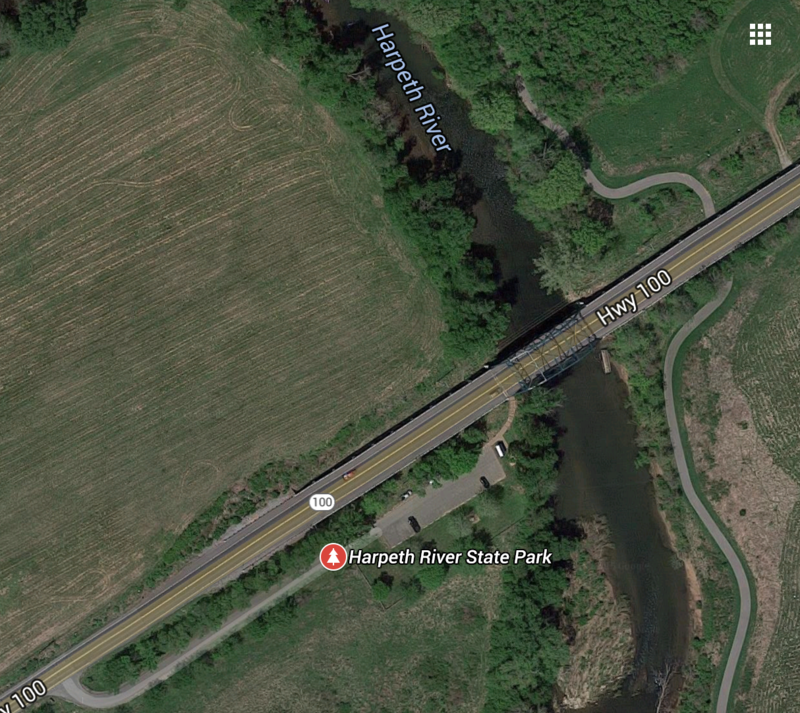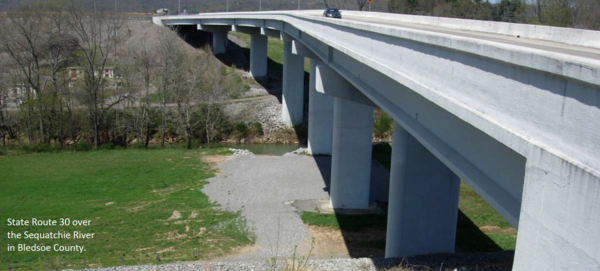
Tennessee has been trying to help kayakers and canoe enthusiasts find more places to put in to the state’s rivers. But some paddlers say the state hasn’t kept up with demand and may even be going backward.
It was a simple idea: Every time Tennessee would repair a bridge over water, just leave behind the little dirt construction road — where the cranes sat or where workers parked — so that boaters could easily reach the water. In a state with many rivers, and bridges typically crossing all of them at some point, this program known as
”
Park and Float,” held a lot of promise.
An outdoors TV show, called “Wild Side,” celebrated the idea in a 2011 segment:
Since that time, demand for water recreation has only grown, said Frank Fiss, assistant chief of fisheries
with the Tennessee Wildlife Resources Agency.
”
There’s been a lot of people buying non-motorized crafts of all sorts. Namely kayaks, canoes, stand-up paddle boards. And they all want to get to the water,” he said.

Yet some paddlers — and Fiss
himself is often out on the water — have found chained gates and “no parking” signs that block access, they say.
“If your nearby favorite place to put in and float a river disappears, then you got a problem,” Fiss
said.
“
That one spot means everything to you, because that’s your local, home water.”
Patty Shultz, with the Tennessee Scenic Rivers Association, cited blocked access points in Wilson, Rutherford and Hickman counties, although some of those were never official park-and-float projects.
“
If it doesn’t become formal, before you know it, a no parking sign goes up,
” she said.
More:
Park and Float newsletter
The other key player in the program is the Tennessee Department of Transportation, where Deputy Commissioner Paul Degges
said there has always
been something of a gray area for “Park and Float,” and no specific funding set aside.
On one hand, it usually makes sense for his crews to create a multi-purpose access point on the 30 or more bridges they replace each year.
“Just the physical aspect of building a bridge, I have to put a crane down next to the river … and sometimes we can just leave that access road in place,
“
he said.
“
I think there’s an argument to be made, that in some cases, it can save the state of Tennessee money.”
But not always. Terrain or environmentally sensitive species can prohibit access — and a downside can accompany the areas they do create.
“From time to time we get locations where people come set bonfires under the bridges, dump garbage and dump junk under bridges and we get property owners coming to us,” he said.

Degges, an avid fishermen himself — he enjoys access points
along the Harpeth River in West Nashville and at
the Beaver Dam Creek in Centerville — said reaching the waters beneath bridges makes sense in a state with 8,000 water crossings — on state highways alone. About 4,000 have been repaired or replaced since 1982.
Under pressure from avid boaters, the transportation and wildlife agencies are thinking of how to deliver on the early hopes of the program. Advanced reviews of TDOT’s five-year bridge plan could help identify ideal put-ins, and Degges said he’s willing to make the argument that improving recreation makes economic sense to the state, as long as
paddlers will clearly say where they want to get into the water.
“If it’s no cost, or essentially no cost, we can generally do it,” Degges said.
It’s a program Tennessee was proud to launch, but that now seems stalled. Some other states, meanwhile, have borrowed the idea.
Maryland went so far as to change state law and has created nearly three dozen new access points.
More:
TWRA outdoor recreation app and maps
Park and Float access points
— SR-30 in Bledsoe County over the Sequatchie River
— U.S. 70S in Cannon County over the East Fork Stones River
— SR-400 in Carter County over the Watauga River
— SR-249 in Cheatham County over the Warpath River
— SR-12 in Cheatham County over Sycamore Creek
— U.S. 25/U.S. 70 in Cocke County over the French Broad River
— U.S. 64 in Giles County over Richland Creek
— Highway 64 in Lincoln County over the Elk River
— U.S. 431 in Marshall County over the Duck River
— Highway 412 in Perry County over the Buffalo River
— Highway 70 in Roane County over the Clinch River
Source: TWRA



